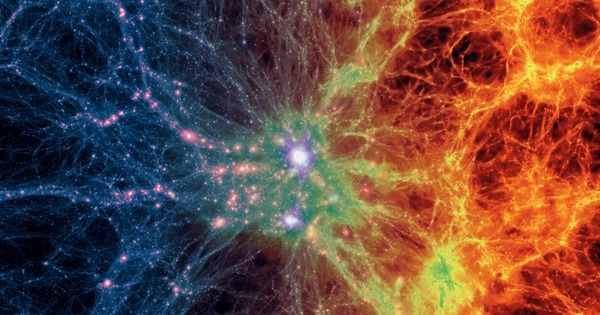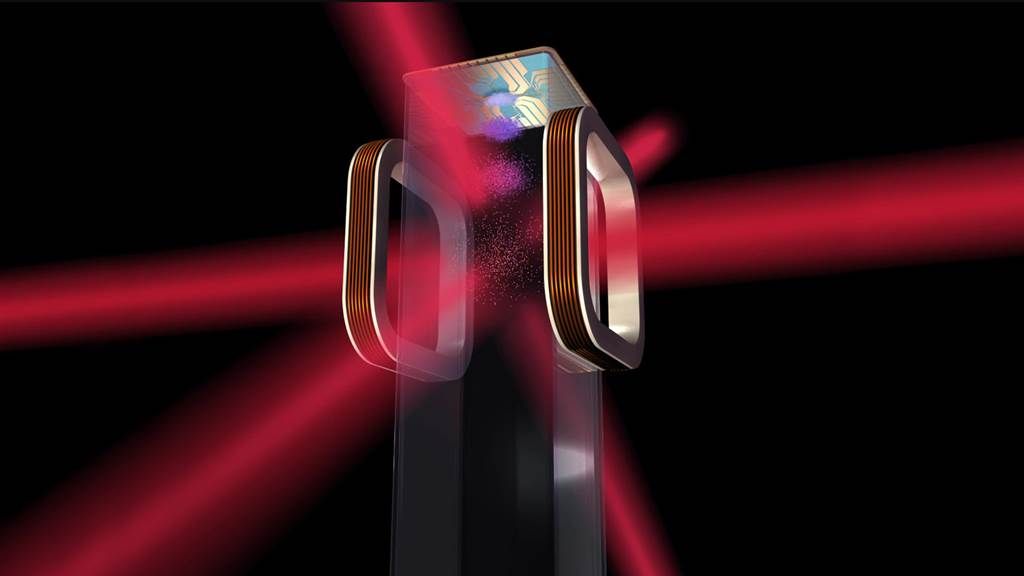Archive for the ‘particle physics’ category: Page 498
Jul 3, 2018
Why Particle Physicists Are Excited About This Mysterious Inconsistency
Posted by Genevieve Klien in categories: mathematics, particle physics
Scientists haven’t conclusively spotted any new particles since the Higgs boson, and that’s got some people worried—there are a ton of other physics puzzles remaining, many of which would require the presence of a new particle to resolve. But recently, there have been some tantalizing clues of new physics, perhaps a new particle, that many scientists are excited about.
There’s a discrepancy between theoretical and experimental calculations of the “muon magnetic moment,” or how strongly the electron’s heavier cousin behaves in a magnetic field. A newer mathematical calculation has made things even more interesting, and some particle physicists are eagerly awaiting the new results from an experiment here in the United States.
Jul 3, 2018
Nanotechnology Takes Giant Leap Foward
Posted by Klaus Baldauf in categories: nanotechnology, particle physics
Scientists have been able to move atoms around for 30 years, but moving molecules has proven much more difficult.
Jun 26, 2018
Wendelstein 7-X achieves world record for fusion product
Posted by Bill Kemp in category: particle physics
In the past experimentation round Wendelstein 7-X achieved higher temperatures and densities of the plasma, longer pulses and the stellarator world record for the fusion product. Moreover, first confirmation for the optimisation concept on which Wendelstein 7-X is based, was obtained. Wendelstein 7-X at Max Planck Institute for Plasma Physics (IPP) in Greifswald, the world’s largest fusion device of the stellarator type, is investigating the suitability of this concept for application in power plants.
Unlike in the first experimentation phase 2015/16 the plasma vessel of Wendelstein 7-X has been fitted with interior cladding since September last year. The vessel walls are now covered with graphite tiles, thus allowing higher temperatures and longer plasma discharges. With the so-called divertor it is also possible to control the purity and density of the plasma: The divertor tiles follow the twisted contour of the plasma edge in the form of ten broad strips along the wall of the plasma vessel. In this way, they protect particularly the wall areas onto which the particles escaping from the edge of the plasma ring are made to impinge. Along with impurities, the impinging particles are here neutralised and pumped off.
“First experience with the new wall elements are highly positive”, states Professor Dr. Thomas Sunn Pedersen. While by the end of the first campaign pulse lengths of six seconds were being attained, plasmas lasting up to 26 seconds are now being produced. A heating energy of up to 75 megajoules could be fed into the plasma, this being 18 times as much as in the first operation phase without divertor. The heating power could also be increased, this being a prerequisite to high plasma density.
Jun 25, 2018
Has This Startup Cracked the Secret to Fusion Energy?
Posted by Genevieve Klien in categories: nuclear energy, particle physics
A new startup hopes that orienting the spins of hydrogen atoms could finally crack the puzzle of commercially viable fusion energy, but some experts are skeptical.
Jun 23, 2018
Space station experiment will create the coldest spot in the universe
Posted by Dan Kummer in categories: particle physics, quantum physics, space
The high-flying experiment could shed new light on some of the biggest mysteries in physics.
NASA’s Cold Atom Laboratory will create the coldest spot in the universe to study the weird quantum behavior of atoms at ultra-cold temperatures.
Jun 23, 2018
This insane golden chamber contains water so pure it can dissolve metal, and is helping scientists detect dying stars
Posted by Genevieve Klien in category: particle physics
Super-Kamiokande (or “Super-K” as it’s sometimes referred to) is a neutrino detector. Neutrinos are sub-atomic particles which travel through space and pass through solid matter as though it were air.
Studying these particles is helping scientists detect dying stars and learn more about the universe. Business Insider spoke to three scientists about how the giant gold chamber works — and the dangers of conducting experiments inside it.
Jun 21, 2018
A Strange Type of Matter Might Lie Inside Neutron Stars, And It Breaks The Periodic Table
Posted by Shailesh Prasad in category: particle physics
A group of physicists are questioning our understanding of how quarks — a type of elementary particle — arrange themselves under extreme conditions. And their quest is revealing that elements beyond the edge of the periodic table might be fair weirder than we thought.
Deep in the depths of the periodic table there are monsters made of a unique arrangement of subatomic particles. As far as elements go, they come no bigger than oganesson – a behemoth that contains 118 protons and has an atomic mass of just under 300.
That’s not to say protons and neutrons can’t be arranged into even bigger clumps and still remain somewhat stable for longer than an eye blink. But for all practical purposes, nobody has discovered it yet.
Jun 19, 2018
Can Thousands of Smartphones Help Detect Cosmic Rays?
Posted by Genevieve Klien in categories: cosmology, mobile phones, particle physics
Your smartphone has a particle detector on it, and scientists want you to help them uncover how the universe really works and maybe even discover the true nature of dark matter. There are just a few bugs to work out.
High-energy particles from space, called cosmic rays, constantly bombard the Earth. There are all sorts of things we might be able to learn about the universe by studying those particles. We’ve previously discussed high-tech, expensive equipment used to monitor them. But the physicists behind a new project want your smartphone to help gather data on these cosmic rays, hopefully revealing new insights into dark matter and other strange phenomena.
“This project can only be successful with a large number of people,” Piotr Homola, associate professor at the Institute of Nuclear Physics at the Polish Academy of Sciences, told Gizmodo. “We need public engagement on an unprecedented scale.”
Continue reading “Can Thousands of Smartphones Help Detect Cosmic Rays?” »
Jun 19, 2018
Interaction of paired and lined-up electrons can be manipulated in semiconductors
Posted by Genevieve Klien in categories: computing, particle physics, quantum physics
The way that electrons paired as composite particles or arranged in lines interact with each other within a semiconductor provides new design opportunities for electronics, according to recent findings in Nature Communications.
What this means for semiconductor components, such as those that send information throughout electronic devices, is not yet clear, but hydrostatic pressure can be used to tune the interaction so that electrons paired as composite particles switch between paired, or “superconductor-like,” and lined-up, or “nematic,” phases. Forcing these phases to interact also suggests that they can influence each other’s properties, like stability – opening up possibilities for manipulation in electronic devices and quantum computing.
“You can literally have hundreds of different phases of electrons organizing themselves in different ways in a semiconductor,” said Gábor Csáthy, Purdue professor of physics and astronomy. “We found that two in particular can actually talk to each other in the presence of hydrostatic pressure.”

















